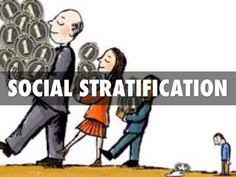
Finding More Focus in a Qualitative Study
Order Instructions:
Discussion 1 – Week 3 Attachment
Finding More Focus in a Qualitative Study
You must always consider the research method you plan to use when collecting your data. This can have an impact on how you proceed. The five research approaches can vary in the variety of information collected, the scope of the issues, and the invasiveness of the data collection effort.
•Locate a qualitative DBA doctoral study from the Walden library. Review the methodology section and compare and contrast the design and the method with the information you have learned from the Creswell course text.
•Analyze and discuss the recursive relationship between research methods and data collection techniques and how that can help to bring focus to your study.
With these thoughts in mind:
Post by Day 3 a response to the topic.
Assignment #2
Articulating Your Business Problem Statement
My topic:Determining methods for leaders to motivate a multi generational workforce.
In the beginning of a design for study, a qualitative researcher should start by introducing a business problem statement. The objective of this statement is to provide the motivation for studying a particular area of interest. A business problem statement is a clear portrayal of the issues that will need to be addressed within your research.
This week, you will have the opportunity to solicit the assistance of your colleagues in refining and honing your initial business problem statement into a viable, researchable statement.
• Write a first draft of a business problem statement and post it to the Discussion board.
Please submit assignments on a separate page each.!!!!!
SAMPLE ANSWER
Week 3 Discussion 1 &2
Discussion 1; Analyze and discuss the recursive relationship between research methods and data collection
Research is mandatory in our world today so that we can understand our world and its surrounding environmental factors better. Things are changing daily; new species are being discovered in large numbers due to research (Devers & Frankel,1999). In research, there are many methods that can be used so as to conduct the studies required and one of the most used methods is qualitative/quantitative research methods. These two words are often confused with a study; qualitative methods involves the studying of reasons behind the problem, the opinion of people about the problem and what encourages the problem to pursue. While quantitative approach implies the study of how big the problem is and it uses statics, formulae, etc. this method should be used together for better results of analyzing a given problematic in the society.
The qualitative method mostly involves open questions that allow each to give their opinion, and, therefore, the researcher has a broad range of information from the different point of views. The quantitative method deals with numbers and data collection is important since when \collecting of information in an area, the information should be accurate so that a solution can be obtained efficiently for the betterment of the society. In quantitative some of the methods used to collect data are face-to-face interviews, online survey, telephone interviews, just to mention but a few. After a problem is identified using the qualitative method and it is measured using quantitative method then data analysis is done and solutions strategies are aligned (Merriam 1998). Data analysis involves tables and charts, and then there is the summary of the study and with this information the world, is becoming better and solutions to arising issues are arrived at using the focusing methods and analysis in the field actually.
Discussion 2; determining methods for leaders to motivate a multi-generational workforce
The current working industry has different generations working in them, and the truth of the matter is that all the generations are essential for all activities to flow well. So far, four generations have been identified by the organization depending on the age group. These are; the traditionalist (born in the year 1945 and below), baby boomers (born between 1946-1964), Generation X (born between 1965-1980) and the final group is the Millennial (born between 1981-2000). These groups have very distinct ways of doing things that includes their culture, ethnicity, tolerance, ideas, among others. However as a leader one has to bring all these groups together since a company grows by linking the past success and failure with the present and future (Cassell, et al. 2009).
Traditionalists are defined as employees who are loyal, dedicated, respect authority and value their families. These individuals are as a result of growing up in economic crisis and are, therefore, experienced firsthand of what financial crisis can lead to and would do anything to prevent it. Baby boomers are more optimistic, want growth and world like to fulfill personal gratification. They are as a result of difficult childhood and hence they would like to fulfill for themselves what their parents were unable to. Generation X is more involved in their work and tends to have self-drive to make an organization better than they found it and tend to value the results more than the route of achieving the results. They also have value for their families. The final group Millennia’s also referred to as Generation Y are the children who were born and raised with technology, and therefore they create so much expectation for themselves and the work they do.
As earlier reported a leader has to find a way to make all these generations work together, and this is achieved by implementing particular strategies (Neumann 2005). Telecommunication is highly regarded so as to merge the generations because it allows workers to communicate, have a plan and ensure that all areas are flowing smoothly whether from a junior to a senior or vice versa. Education is crucial since it allows training of employees to understand their work and the work of others to avoid blame games and eventually failure. Flexible schedules allow the employees to have a work life and personal life without having one take over the other. In addition, the programs make the employees feel independent. Measures to merge generational groups should be implemented by leaders to have greater successful organization.
References
Cassell, C., Bishop, V., Symon, G., Johnson, P., & Buehring, A. (2009). Learning to be a qualitative management researcher. Management Learning, 40(5), 513-533.
Devers, K. J., & Frankel, R. M. (1999). Study design in qualitative research–2: Sampling and data collection strategies. Education For Health (Abingdon, England), 13(2), 263-271.
Merriam, S. B. (1998). Qualitative Research and Case Study Applications in Education. Revised and Expanded from” Case Study Research in Education.”. Jossey-Bass Publishers, 350 Sansome St, San Francisco, CA 94104.
Neumann, R. (2005). Doctoral differences: Professional doctorates and PhDs compared. Journal of Higher Education Policy and Management, 27(2), 173-188.
We can write this or a similar paper for you! Simply fill the order form!












